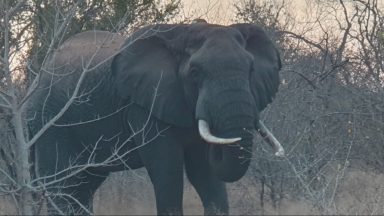The training and welfare of Peace Parks Foundations’ canine rangers are extremely important as these working dogs play a vital role in protecting conservation areas. Today, Peace Parks CEO Werner Myburgh meets up with Gabriel Mpala and the canine unit in Nyika National Park to see how Nkonzo, AK and Jungle are doing. We also get some updates from Limpopo National Park to see how Chicago’s training…and Hunter’s napping, is going.
Starting in Malawi, Gabriel, who previously led the canine training in Nyika National Park, explains to Werner how the dogs’ training is currently being structured to ensure they are fit enough to fulfil their duties as a part of the quick reaction force. Each dog is cared for by a specific handler, who forms a close bond with the animal, and it is their role to guide the dogs through training and look after their well-being.
Nyika is Malawi’s oldest protected area, and an important water catchment area that feeds into Lake Malawi. The Nyika Plateau, a high-lying grassland area, is the perfect habitat to support rare endemic flora such as orchids and a host of wildlife, including the largest population of roan antelope in the world. To protect all these species as best as possible, Jungle, Nkonzo and AK, seen in the video above, play a crucial role in assisting the rangers with their counter-poaching operations and helping to track poachers using their highly developed sense of smell.
Meanwhile, in Limpopo National Park, Chicago, the newest and certainly most energetic recruit, is hard at work finishing up the last of her training before heading to Zinave National Park. Despite Chicago working hard, her four-legged friend Hunter spends most of his time finding the shadiest spots for naps – one of which includes the shade from a ranger’s vehicle during the heat of the day.
Whether it’s Hunter’s impressive napping skills and loyal companionship or the vital support that the tracking dogs provide to the rangers on counter-poaching operations, Peace Parks recognises the invaluable contributions the capabilities of these dogs bring to the protection of conservation areas.


